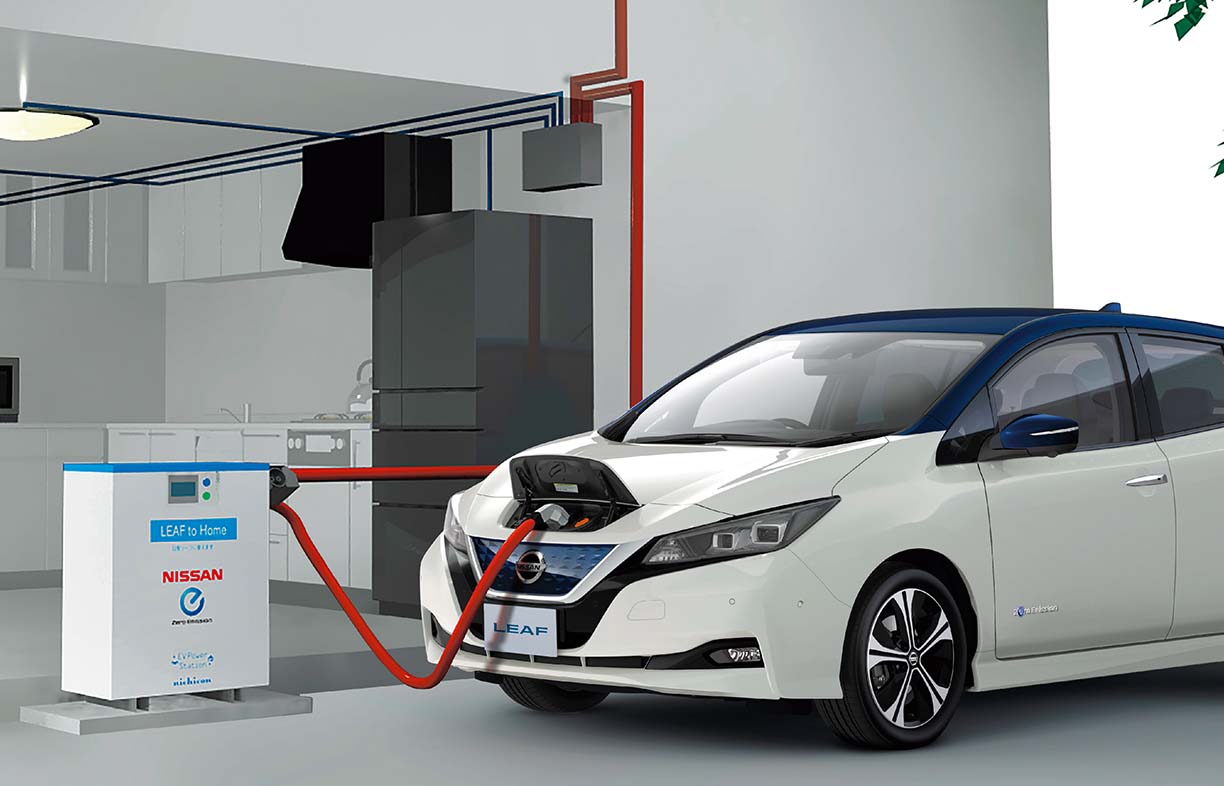Vehicle-to-Home (V2H) Smart Charging For Electric Car Charger
Electric car can power your house via Vehicle-to-Home (V2H) smart charging
New single-stage EV charger for V2H applications
Recently, electric vehicle (EV) chargers with their batteries have been developed for vehicle-to-home (V2H) applications, acting as a backup generation to supply emergency power directly to a home. Traditional EV charger in V2H applications mainly consists of DC/DC and DC/AC stages, which complicate the control algorithm and result in low conversion efficiency. In order to solve the problem, a novel EV charger is proposed for V2H applications. It can boost the battery voltage and output AC voltage with only one-stage power conversion. Also, the DC, 1-phase and 3-phase loads can be fed with the proposed single-stage EV charger. The system control strategy is also provided to deal with versatile load variations. Finally, the performance evaluation results verify the effectiveness of the proposed solution.
That exactly is the use case offered by vehicle-to-home (V2H) smart charging. So far, people use dedicated batteries (like Tesla Powerwall) for this local storage ; but using V2H charger technology, your electric car can also become such a power storage, and as an emergency power back-up!.
Replacing ‘static’ wall batteries with a more sophisticated & larger capacity ‘moving’ batteries (EV) sounds great!. But how does it work in real life?, Won’t it affect EV’s battery life?, How about EV manufacturers’ battery warranty? and is it really commercially viable?. This article may explore answers for some of these questions.
How does Vehicle-to-home (V2H) work ?
The electric vehicle is charged by solar panels on the roof, or whenever the electricity grid tarrif is low. And later during peak hours, or during power outages, the EV battery is discharged via V2H charger. Basically, the battery of electric vehicle stores, shares and re-purposes energy when needed.
Below video demonstrates the operation of V2H technology in real life with a Nissan Leaf.
V2H: Vehicle to Home
V2H is when a bidirectional EV charger is used to supply power (electricity) from an EV Car’s battery to a house or, possibly, another kind of building. This is done via a DC to AC converter system usually embedded within the EV charger. Like V2G, V2H can also help to make balance and settle, at a larger scale, local or even national supply grids. For instance, by charging up your EV at night when there is less electrical demand and then using that electricity to power your home during the daytime, you could actually contribute to reducing consumption during peak periods when there is more electrical demand and more pressure on the grid. V2H can, therefore, help make sure our homes have enough power when they most need it, notably during power outages. As a result, it can also reduce the pressure on the electricity grid as a whole.
Both V2G and V2H may become more important as we move towards totally renewable energy systems. This is because different renewable energy sources tend to produce variable amounts of energy depending on the time of day or season. For instance, solar panels clearly capture the most energy during the day, wind turbines when it is windy, and so on. With bidirectional charging, the full potential of EV battery storage can be realized to benefit the entire energy system – and the planet! In other words, EVs can be used for renewable load following: capturing and storing excess solar or wind power when it is generated so that it can be made available for use during times of high demand, or when energy production is unusually low.
To charge an electric car at home, you should have a home charging point installed where you park your electric car. You can use an EVSE supply cable for a 3 pin plug socket as an occasional back up. Drivers usually choose a dedicated home charging point because it’s faster and has built-in safety features.
Post time: Jan-31-2021


